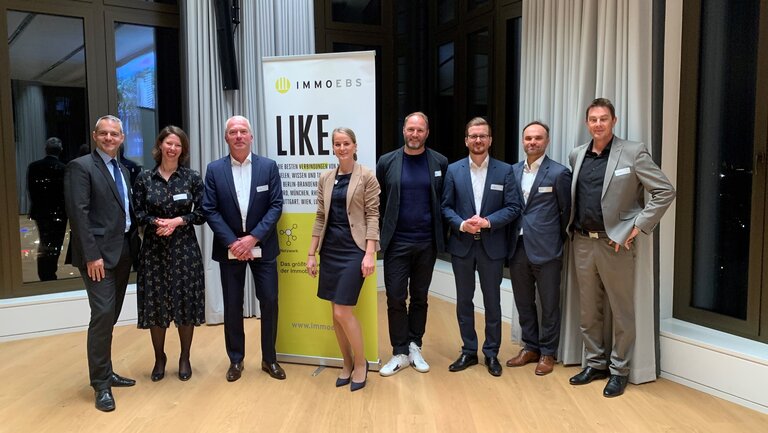A Working Environment in which the BayWa Brand feels at Home
1,500 new workplaces, 20 floors, 47,000 square meters - visitors were able to experience directly what sustainable and flexible workplace design and layout look like at the event venue: Martin Lechner, Head of Corporate Real Estate Management at BayWa AG, Hermann Maier, co-chair of IMMOEBS e.V. and Holger Seidel, Associate Partner at Drees & Sommer, welcomed the guests to the premises of BayWa AG in Munich. This is where the RBSGROUP – Part of Drees & Sommer developed an overall interior design, combining exterior and interior space to create a harmonious general impression. The focus was on making the brand tangible and developing precisely the right interior design narrative with customized working environments. A variety of workplace typologies have been created with an individually configurable mix of basic, communication, concentration and infrastructure areas, in which staff members and visitors feel comfortable. They offer options for interaction and concentration, withdrawal and regeneration, depending on the user's particular needs. ‘For us as designers, it's great to be able to approach the entire building from one perspective,’ said Alexander Strub, Creative Director, RBSGROUP – Part of Drees & Sommer. In order to convey the brand values of trust, innovation and solidity in the long-established company BayWa, for example, the experts use genuine, down-to-earth and durable materials.
New Forms of Mobility for Cities fit for the Future
More flexibility in the choice of workplace not only increases job satisfaction and staff loyalty, but could also reduce traffic. Yet in order to get congestion, traffic chaos and air pollution under control in the long term, we need new forms of mobility. Tobias Schütz, Senior Project Partner at Drees & Sommer, highlighted in his presentation that the best properties are useless if we cannot get to them.
The mobility certificate, for example, provides an assessment of the real estate's situation. Due to the current challenges of congested roads, too little space for stationary and flowing traffic and the resulting environmental impact such as CO², particulate matter and nitrous gases, mobility is undergoing a major change. ‘Our real estate and neighborhoods must face up to this transformation, as the location factors are changing due to these new mobility requirements. It's our job to make our buildings and neighborhoods fit for the future by creating integral solutions, for example through digitalization, sharing, electromobility and intermodality,’ explained Tobias Schütz.
Filling Station and Rest Area Fürholzen as Energy Supplier
Dr. Markus Treiber, Associate Partner at Drees & Sommer, also presented forward-looking mobility strategies during the evening. He illustrated the H2 Innovation Circle using the example of the innovative, energy self-sufficient and sustainable filling station and rest area Fürholzen in Bavaria. As one of the most energy-efficient filling stations and rest areas in Germany, it provides all the advanced fueling systems of the future. Using photovoltaic panels and its own combined heat and power plant, the filling station and rest area produces more energy than it consumes itself. The excess electricity is made available to electromobility, converted into hydrogen or fed into the main power grid. ‘It is only by adopting a holistic approach to mobility, buildings and infrastructure that we can take full advantage of the potential,’ commented Markus Treiber, thus establishing a connection between each of the core components of the blue city.
